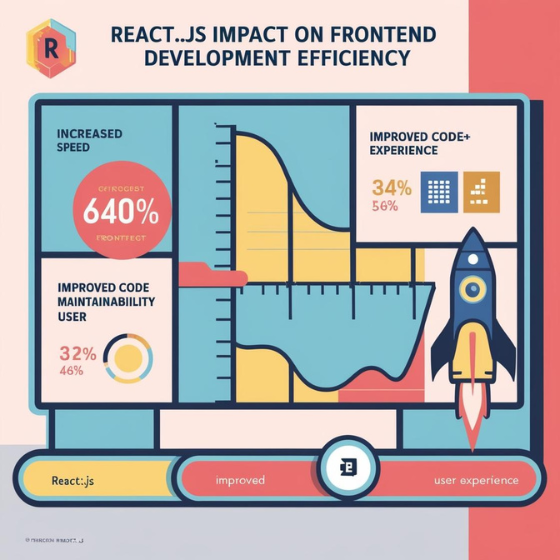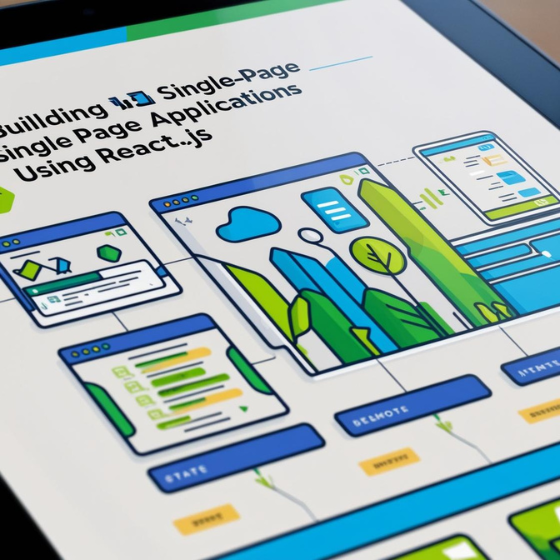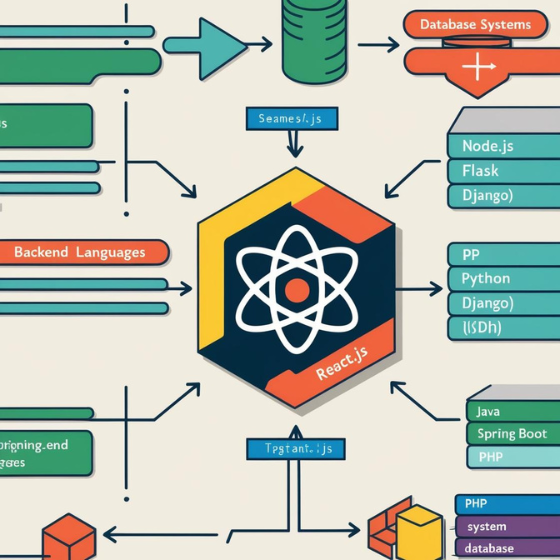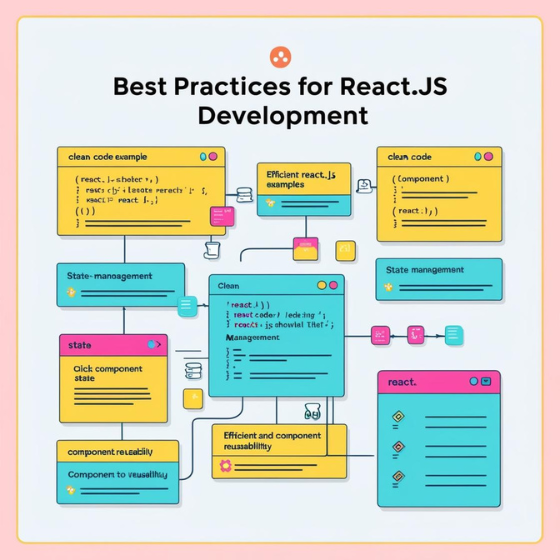The Future of React.js in E-commerce
E-commerce is growing at an unprecedented pace, with the global market projected to reach $8.1 trillion by 2026. To meet the demands of this expanding industry, businesses need dynamic, responsive, and scalable technologies. React.js has emerged as a game-changer, powering some of the most successful e-commerce platforms worldwide. But what makes React.js indispensable, and what lies ahead for its role in online retail?
In this blog, we’ll explore the future of React.js in e-commerce, examining its current impact, upcoming trends, and why it’s the go-to choice for businesses aiming to create superior shopping experiences.
Why React.js is Revolutionizing E-commerce
React.js, developed by Facebook, is a powerful JavaScript library for building user interfaces. Its flexibility, efficiency, and developer-friendly nature have made it a staple in modern web development, particularly in e-commerce.
Key Benefits of React.js for E-commerce
- Dynamic User Interfaces: React.js enables interactive and visually appealing shopping experiences.
- High Performance: Its virtual DOM optimizes updates and rendering, ensuring fast page loads.
- Scalability: Perfect for handling growing inventories and user bases.
- SEO Optimization: Server-side rendering (SSR) improves page visibility on search engines.
These features are just the tip of the iceberg when it comes to React.js’s capabilities in transforming e-commerce.
The Current State of React.js in E-commerce
Many leading e-commerce brands, including Shopify, Walmart, and Amazon, rely on React.js for their frontend solutions. Here’s how it’s shaping the industry today:
1. Personalized Shopping Experiences
React.js facilitates dynamic content rendering, enabling retailers to show personalized product recommendations based on user preferences.
2. Mobile-First Development
With mobile commerce accounting for 72.9% of all e-commerce sales, React.js’s ability to create responsive designs ensures seamless experiences across devices.
3. Enhanced Performance with Progressive Web Apps (PWAs)
React.js powers PWAs, offering offline capabilities and app-like experiences that are faster and more engaging.
The Future of React.js in E-commerce
As e-commerce continues to evolve, so will the role of React.js. Here are the trends that will define the future of React.js in e-commerce:
1. AI and Machine Learning Integration
AI-powered recommendation engines and chatbots are becoming standard in e-commerce. React.js can seamlessly integrate with backend AI systems, delivering smarter, real-time interactions.
Example: An AI-driven React.js platform can analyze user behavior to provide product suggestions, ensuring a personalized shopping experience.
2. Real-Time Data Processing
Future e-commerce platforms will rely on real-time data to update inventory, pricing, and promotions instantly. React.js, with WebSockets and APIs, ensures these updates reflect on the frontend without reloading the page.
3. Voice Commerce
Voice commerce is on the rise, and React.js is equipped to create voice-enabled interfaces that allow users to search for products, place orders, and track shipments through voice commands.
4. AR and VR Shopping Experiences
Augmented Reality (AR) and Virtual Reality (VR) are transforming online shopping. React.js’s component-based architecture simplifies the integration of AR/VR libraries, allowing businesses to create immersive experiences.
Example: An e-commerce site could let users visualize furniture in their homes using AR, directly from their browser.
5. Decentralized E-commerce Platforms
With blockchain technology entering e-commerce, React.js will play a crucial role in building decentralized platforms that provide greater transparency and trust.
How React.js Enhances Key E-commerce Features
To truly appreciate the potential of React.js, let’s look at how it can optimize essential features of an e-commerce platform:
1. Product Browsing and Filtering
- Dynamic Filters: React.js enables real-time filtering based on user-selected criteria.
- Infinite Scrolling: Ensures a smooth browsing experience by dynamically loading more products as users scroll.
2. Shopping Cart and Checkout
- Real-Time Updates: Any change in the cart (e.g., adding/removing items) reflects instantly without refreshing the page.
- Secure Checkout: With React.js, businesses can integrate secure payment gateways effortlessly.
3. User Profiles and Dashboards
- Customizable Interfaces: React.js components can render personalized dashboards based on user preferences.
- Order Tracking: Allows real-time order status updates with API integration.
Best Practices for Building E-commerce Platforms with React.js
To harness the full potential of React.js, developers should follow these best practices:
- Optimize for Performance
- Use code-splitting to reduce initial load times.
- Leverage lazy loading for images and components.
- Ensure Mobile Responsiveness
- Adopt a mobile-first design approach.
- Use frameworks like React Native to build cross-platform mobile apps.
- Enhance Security
- Implement HTTPS and Content Security Policy (CSP).
- Use libraries like Helmet for securing HTTP headers.
- Integrate Analytics
- Add tracking tools to monitor user behavior and optimize the shopping experience.
Challenges and How to Overcome Them
While React.js offers numerous advantages, developers may encounter challenges when integrating it with e-commerce platforms.
1. SEO Limitations
Although React.js supports server-side rendering, improper implementation can impact SEO rankings. Ensure proper SSR setup for better visibility.
2. Complexity in State Management
Managing application state in larger e-commerce platforms can become challenging. Use tools like Redux or Context API to streamline state management.
3. Performance Issues
Handling large product catalogs can lead to performance bottlenecks. Optimize your backend APIs and use React.memo to reduce unnecessary renders.
Why Choose Sodio for Your React.js Development Needs
At Sodio, we specialize in creating cutting-edge e-commerce platforms powered by React.js. Whether you need a responsive storefront, personalized shopping features, or seamless integration with backend technologies, we’ve got you covered.
What We Offer:
- Custom Development Solutions: Tailored to your business needs.
- Scalable Architectures: Built to grow with your enterprise.
- Expertise in Emerging Technologies: From AI to blockchain, we bring the future of e-commerce to your doorstep.
? Explore our React.js Development Services to learn more.
Conclusion
The future of React.js in e-commerce is bright, driven by its ability to create dynamic, scalable, and user-friendly platforms. As online shopping becomes more competitive, adopting React.js ensures your business stays ahead of the curve.
From AI integration to immersive AR experiences, the possibilities are endless. By leveraging Sodio’s expertise, you can build a next-generation e-commerce platform that delights customers and drives sales.
Ready to elevate your e-commerce platform?
? Contact us today to discuss your project and explore the future of React.js in online retail.







